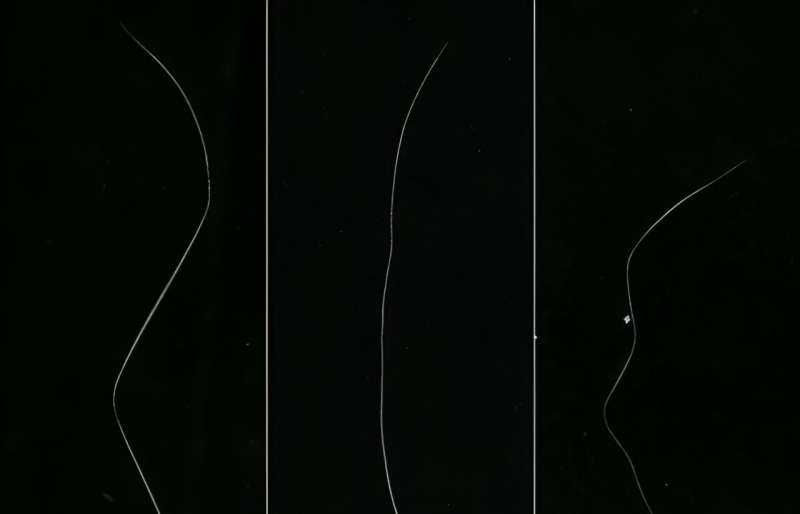This article has been reviewed according to Science X's editorial process and policies. Editors have highlighted the following attributes while ensuring the content's credibility:
fact-checked
peer-reviewed publication
trusted source
proofread
Molecular secrets behind 'zigzag' hair patterns uncovered, offering an avenue for anti-aging solutions

RIKEN researchers have discovered how biological rhythms influence hair growth in mice. This finding could pave the way for novel anti-aging treatments in humans.
The sleep and menstrual cycles are two examples of the vast array of biological rhythms that underpin almost all biological processes. Since such biological rhythms play essential roles from an organism's beginnings to its old age, it is critical to gain insights into how they work. But not much is known about how such periodic cycles are sustained after birth.
Hair follicles in mammals provide an interesting system to explore biological rhythms since they are repeatedly regenerated in the hair cycle process.
A team led by Takashi Tsuji of the RIKEN Center for Biosystems Dynamics Research has been investigating the molecular mechanisms responsible for the distinctive bending pattern observed in "zigzag hairs." Found in the underfur of mice, these hairs develop kinks every three days during the follicle maturation process.
Now, the team has uncovered a molecular rhythm responsible for this hair-growth phenomenon. The findings have been published in Nature Communications.
Every three days, there was a noticeable shift in the spatial arrangement of progenitor cells located at the base of developing zigzag follicles in relation to support cells. These interactions were accompanied by cyclic fluctuations in biochemical signals.
This discovery could have practical applications. "By artificially controlling these molecules, it may be possible to regulate biological rhythms and potentially prevent age-related hair changes," says Tsuji. "This could lead to the development of new health care products."
Tsuji's team examined the interplay between two specialized cell types positioned at the base of hair follicles in genetically engineered mice. They found that the crosstalk between these cells orchestrates the three-day molecular rhythms in mouse fur, with synchronized alterations in the behavior of both cell types occurring just before bends formed in the zigzag hairs.
The researchers also pinpointed two genes associated with cell growth and survival that played a pivotal role in mediating these recurring physiological changes.
To investigate the significance of these genes, the researchers knocked them out in one experiment and artificially inflated expression levels in another. In both instances, the genetic manipulations disrupted the molecular rhythms, resulting in a departure from the zigzag shape of the hairs.
The team next plans to look for similar rhythms in human-hair development.
"Variations in hair curvature exist among individuals and different ethnicities, generating significant interest in understanding the underlying biological rhythm," Tsuji says. "If we can unravel this puzzle, it might enable us to manipulate human hair morphology at will and potentially halt age-related changes."
More information: Makoto Takeo et al, Cyclical dermal micro-niche switching governs the morphological infradian rhythm of mouse zigzag hair, Nature Communications (2023). DOI: 10.1038/s41467-023-39605-z
Journal information: Nature Communications
Provided by RIKEN




















